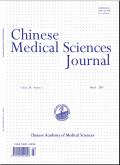Formula-S: Situated Visualization for Traditional Chinese Medicine Formula Learning
Q2 Medicine
引用次数: 0
Abstract
Objective
The study of medicine formulas is a core component of traditional Chinese medicine (TCM), yet traditional learning methods often lack interactivity and contextual understanding, making it challenging for beginners to grasp the intricate composition rules of formulas. To address this gap, we introduce Formula-S, a situated visualization method for TCM formula learning in augmented reality (AR) and evaluate its performance. This study aims to evaluate the effectiveness of Formula-S in enhancing TCM formula learning for beginners by comparing it with traditional text-based formula learning and web-based visualization.
Methods
Formula-S is an interactive AR tool designed for TCM formula learning, featuring three modes (3D, Web, and Table). The dataset included TCM formulas and herb properties extracted from authoritative references, including textbook and the SymMap database. In Formula-S, the hierarchical visualization of the formulas as herbal medicine compositions, is linked to the multidimensional herb attribute visualization and embedded in the real world, where real herb samples are presented. To evaluate its effectiveness, a controlled study (n=30) was conducted. Participants who had no formal TCM knowledge were tasked with herbal medicine identification, formula composition, and recognition. In the study, participants interacted with the AR tool through HoloLens 2. Data were collected on both task performance (accuracy and response time) and user experience, with a focus on task efficiency, accuracy, and user preference across the different learning modes.
Results
The situated visualization method of Formula-S had comparable accuracy to other methods but shorter response time for herbal formula learning tasks. Regarding user experience, our new approach demonstrated the highest system usability and lowest task load, effectively reducing cognitive load and allowing users to complete tasks with greater ease and efficiency. Participants reported that Formula-S enhanced their learning experience through its intuitive interface and immersive AR environment, suggesting this approach offers usability advantages for TCM education.
Conclusions
The situated visualization method in Formula-S offers more efficient and accurate searching capabilities compared to traditional and web-based methods. Additionally, it provides superior contextual understanding of TCM formulas, making it a promising new solution for TCM learning.
方剂- s:中药方剂学习的情境可视化。
目的:中药方剂的学习是中医的核心组成部分,但传统的学习方法往往缺乏互动性和上下文理解,初学者很难掌握方剂复杂的组成规律。为了解决这一差距,我们引入了formula - s,一种用于增强现实(AR)中医配方学习的情境可视化方法,并对其性能进行了评估。本研究旨在通过将formula - s与传统的基于文本的方剂学习和基于网络的可视化学习进行比较,评估其在促进中医方剂初学者学习方面的有效性。方法:formula - s是一款专为中医方剂学习设计的交互式AR工具,具有3D、Web、Table三种模式。数据集包括从权威参考文献(包括教科书和SymMap数据库)中提取的中药配方和草药属性。在Formula-S中,作为草药组合物的配方的分层可视化与多维草药属性可视化相关联,并嵌入到真实世界中,在真实世界中呈现真实的草药样本。为了评价其有效性,进行了一项对照研究(n=30)。没有正式中医知识的参与者被要求进行草药鉴定、配方组成和识别。在这项研究中,参与者通过HoloLens 2与AR工具进行互动。收集了任务性能(准确性和响应时间)和用户体验的数据,重点关注不同学习模式下的任务效率、准确性和用户偏好。结果公式- s的情境可视化方法对中药配方学习任务的反应时间较短,准确度与其他方法相当。在用户体验方面,我们的新方法展示了最高的系统可用性和最低的任务负荷,有效地减少了认知负荷,让用户更轻松、更高效地完成任务。参与者报告说,Formula-S通过其直观的界面和沉浸式AR环境增强了他们的学习体验,这表明这种方法为中医教育提供了可用性优势。结论:与传统方法和基于网络的方法相比,Formula-S中的情境可视化方法提供了更高效、更准确的搜索能力。此外,它提供了优越的中医方剂上下文理解,使其成为中医学习的一个有前途的新解决方案。
本文章由计算机程序翻译,如有差异,请以英文原文为准。
求助全文
约1分钟内获得全文
求助全文

 求助内容:
求助内容: 应助结果提醒方式:
应助结果提醒方式:


